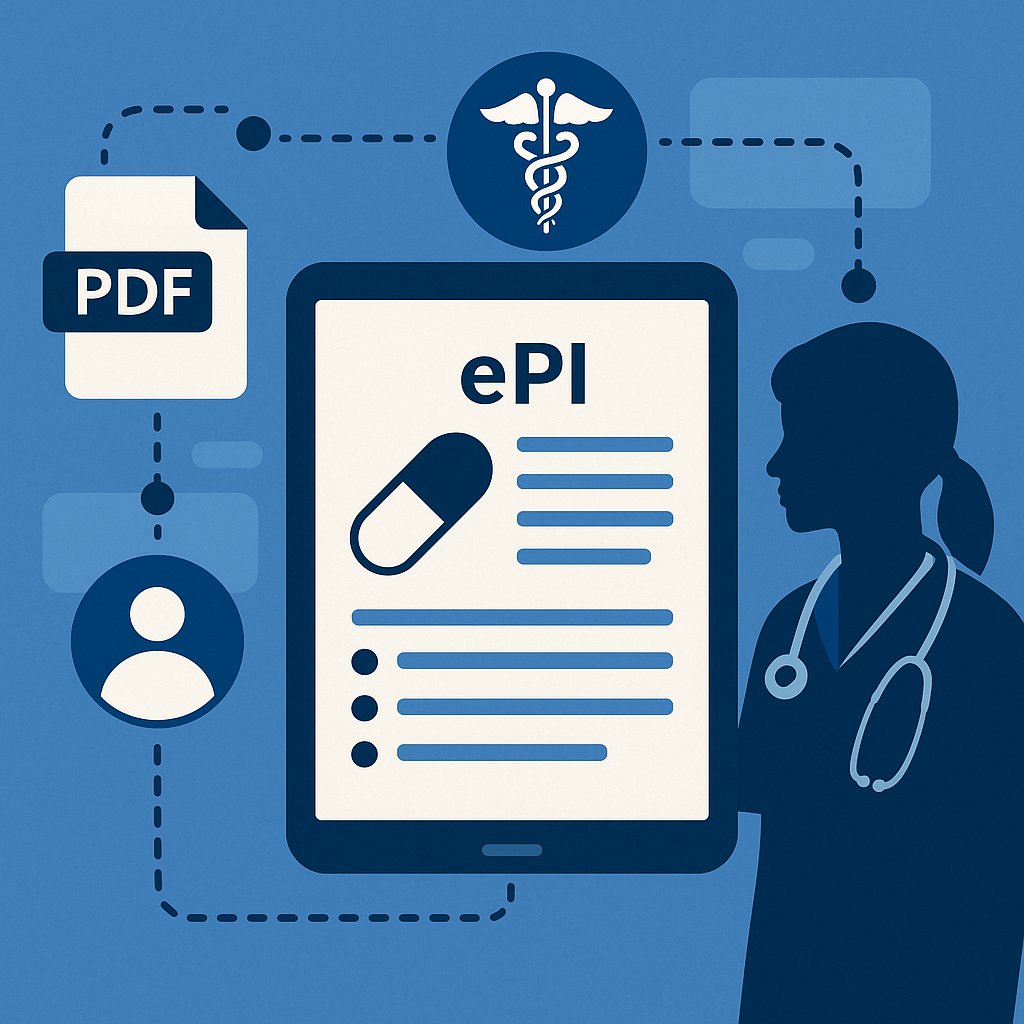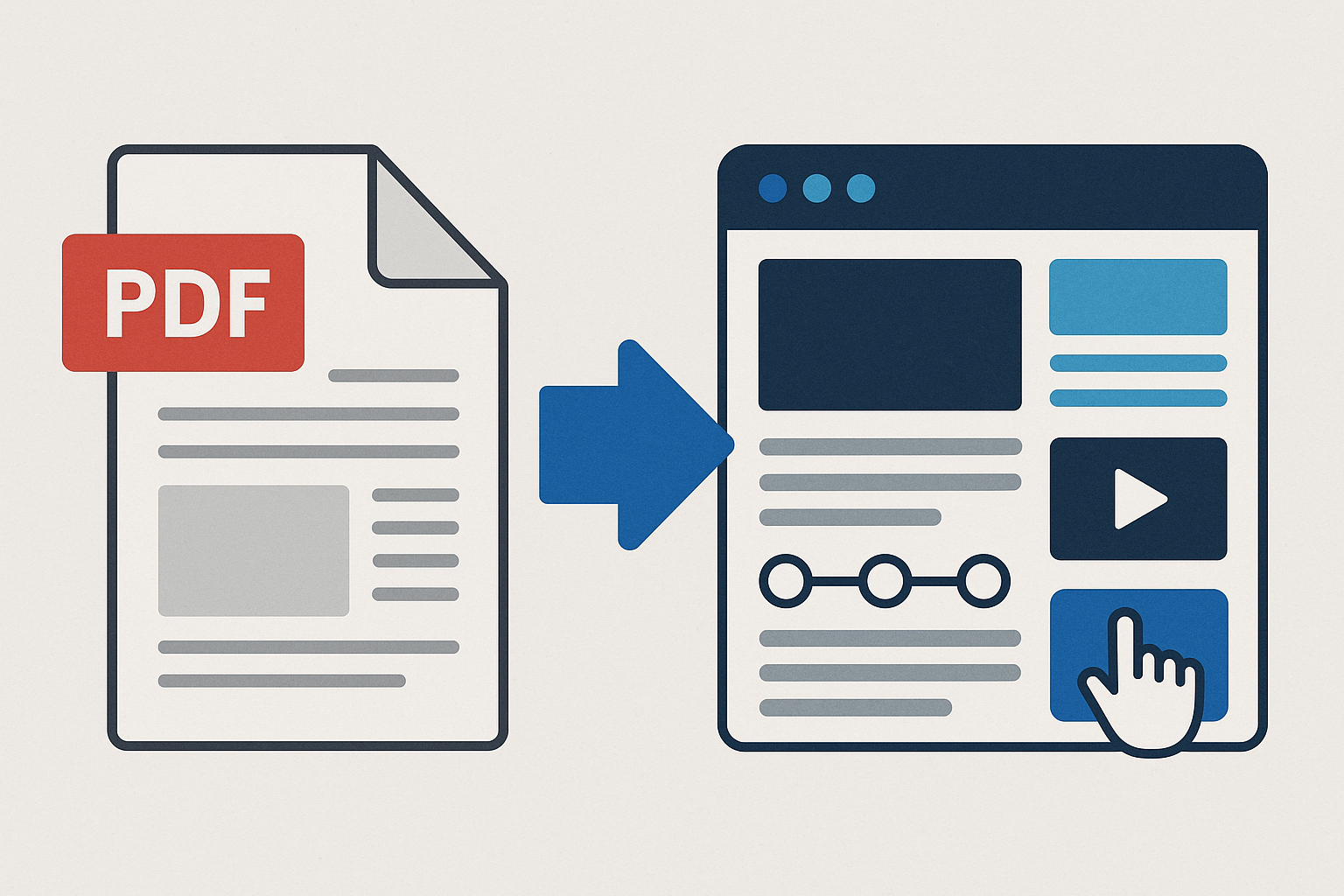Enhancing The Patient Experience with ePI
From PDFs to Interactive Platforms: Why ePI Pharma is the Next Regulatory Leap
For decades, the pharmaceutical industry has treated “digital” labeling as little more than a static PDF uploaded online. But as regulators, healthcare professionals, and patients demand faster access to trustworthy, up-to-date medicines information, that model is reaching its limits. Electronic Product Information (ePI) represents more than a format shift—it’s the foundation for a new era of connected, transparent, and patient-centered communication aligned with evolving regulatory principles.
ePI delivers digital product information that is accessible, current, and interoperable across healthcare systems. Because it contains regulator-approved content, it ensures that all data provided is official and legally valid. These platforms are designed around real user needs—enabling patients, pharmacists, and clinicians to access verified medicinal information quickly and securely.
Why PDFs Fall Short: The Case for Digital Product Information
Historically, pharma’s product information ecosystem was built for print. Patient information leaflets (PILs) and package inserts were designed primarily for regulators and professionals—not for patients managing complex therapies or diverse language needs.
That approach is no longer viable. A PDF, no matter how polished, is essentially a scanned or static copy of a paper document. It cannot be updated dynamically, searched efficiently, or integrated with health-data systems. By contrast, ePI—structured according to the EU ePI Common Standard and interoperable with HL7 FHIR—allows data to flow seamlessly between agencies, healthcare providers, and patient platforms. In practice, it transforms labeling from a static record into a living source of verified, regulatory information.
Global Momentum: Regulators Leading the Shift
Regulators worldwide are converging on a digital-first approach to labeling.
Europe (EMA ePI): Since 2023, the European Medicines Agency and national authorities conducted a pilot of ePI across multiple EU member states. The goal is a harmonized format supporting multilingual access and structured updates.
United States (FDA ePI): The FDA’s ongoing modernization efforts include the expansion of Structured Product Labeling (SPL) and adoption of interoperable data standards.
Japan and Asia-Pacific: Regulatory authorities such as Japan’s PMDA are exploring analogous digital labeling pilots, signaling convergence toward structured, reusable content.
This growing consensus signals that regulatory information must evolve with how clinicians and patients consume data. Still, differing technical timelines and infrastructures mean adoption will progress unevenly.
The Benefits of ePI: Compliance, Safety, and Sustainability
The move toward ePI offers advantages that go beyond efficiency—it strengthens compliance, environmental sustainability, and patient safety.
- Real-Time Updates and Risk Reduction
Structured content enables instant updates across markets. QR code or API-based mechanisms can verify authenticity, batch, and expiry in real time. - Multilingual and Accessible Information
Machine-readable structures support translation, accessibility tools, and screen-reader compatibility—vital for diverse patient populations. - Enhanced Patient Engagement and Literacy
Interactive formats allow patients to navigate by section, view multimedia explanations, or access related educational material. - Data Reuse and Interoperability
Structured labeling supports reuse across submissions, portals, and data models like IDMP and FHIR, improving traceability and efficiency.
Challenges on the Road to Implementation
While the benefits are clear, practical hurdles remain.
- Legacy Infrastructure: Many organizations still operate fragmented IT systems with siloed data. Transitioning to interoperable formats requires workflow redesign and governance alignment.
- Cross-Market Variation: Regulatory standards differ between regions, requiring coexistence of PDF, SPL, and ePI formats during transition.
- Change Management: Moving to ePI is more than a technology upgrade—it’s a cultural shift requiring executive sponsorship and cross-functional collaboration.
The Larger Signal: A Digital-First Regulatory Future

The ePI initiative reflects a broader movement toward structured, digital information management. Health authorities are preparing for a future where submissions, updates, and labeling all operate within a single, interoperable data framework. ePI is the testing ground for that transformation—one where every piece of product information becomes a connected dataset supporting faster, more transparent regulatory decisions.
Preparing for an ePI Future: Structure, Data, and Readiness
To prepare effectively, companies should prioritize:
- Structured Content Authoring (SCA): Adopt modular, data-centric creation workflows that enable automation and reuse.
- Data Governance: Define ownership, maintain controlled vocabularies, and ensure data consistency across systems.
- Technology Readiness: Assess RIM and labeling tools for ePI compatibility and automation potential.
Practical lessons from early ePI pilots highlight that accessibility must remain inclusive—patients should always have the option to request printed materials when needed.
By acting now, organizations can position themselves for faster updates, streamlined compliance, and improved trust with both regulators and patients.
Conclusion: From Static Files to Living Information
The transition to ePI is not a trend—it’s a structural shift. By transforming static files into connected, regulated data, pharma organizations can deliver safer, clearer, and more responsive information. Those who invest early will gain not just compliance readiness but long-term strategic advantage through improved accuracy, reduced errors, and strengthened patient engagement.
Those who act early will gain not only compliance readiness but also strategic advantage: fewer errors, faster updates, and stronger patient trust.
See how Docuvera helps companies get ePI-ready with structured content.
FAQs
ePI refers to digital, structured versions of pharmaceutical product information—replacing static PDFs with machine-readable data that can be updated in real time, translated easily, and integrated into health systems or mobile apps.
Unlike PDFs, ePI is interactive and structured, allowing regulators, healthcare providers, and patients to access the latest information instantly. It’s also interoperable, supporting integration with other digital regulatory systems.
The EMA leads with EU-wide ePI pilots; the FDA is expanding structured labeling and digital labeling initiatives; and the PMDA in Japan is exploring similar frameworks. Many global authorities are now aligning on shared standards.
Legacy IT systems, differing regional standards, and limited data governance create implementation hurdles. Change management and system interoperability are key success factors.
By adopting structured content authoring, ensuring strong data governance, and integrating RIM and labeling systems that can exchange structured data seamlessly.
